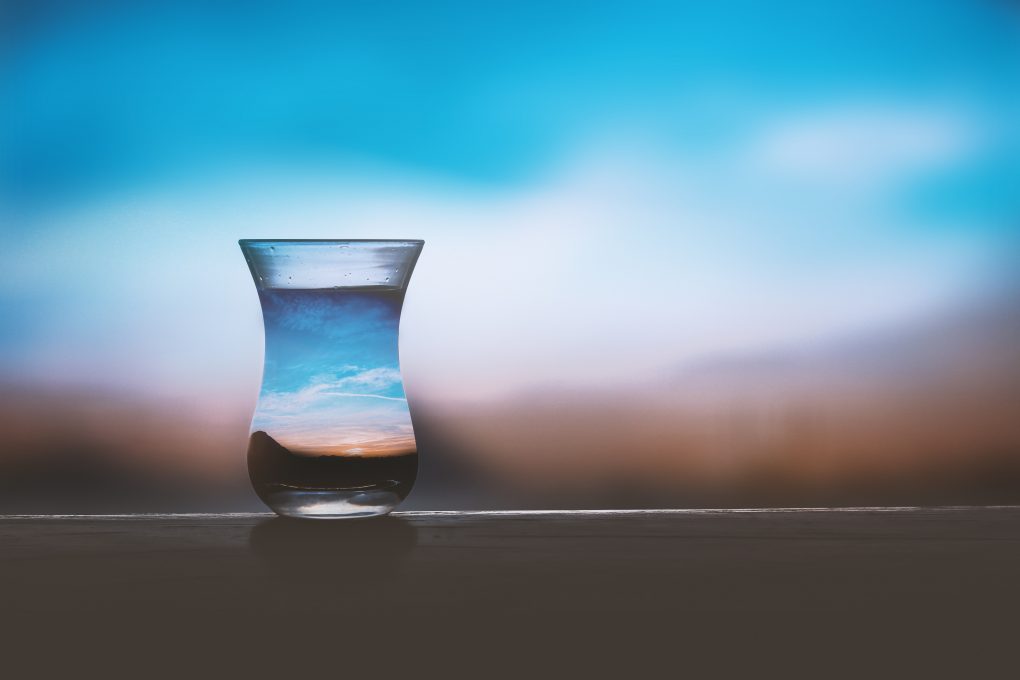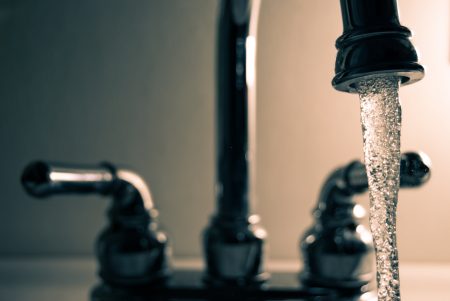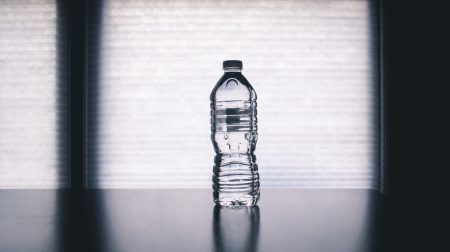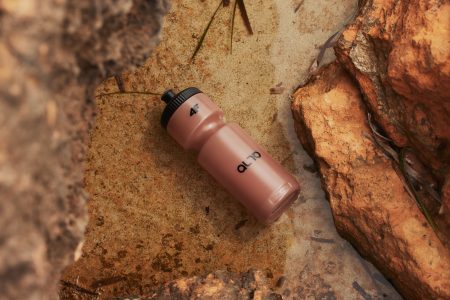
How to Drink Water the Eco-Friendly Way?
Ecology is not a fashion, it is a necessity today. Am I now forcing you to become eco-friendly? Of course not! The purpose of this article is to show you how important it is to respect water resources, recycle, and reduce the amount of garbage on our planet only in the context of drinking water. Everything for the health and the future of our loved ones.
It is important to realize that the vast majority of water on Earth is salt water. Fresh, drinkable water constitutes only about 3%, most of which is the ice cover of both poles, and only 30% of freshwater resources are stored in natural underground reservoirs, in clouds (in the form of water vapor 0.001%) and in rivers, lakes and storage reservoirs (1.2%).
What sources of drinking water we can use?
Water From the Water Supply, or Tap Water
The water in your taps is purified and tested water from freshwater resources, meeting the standards for consumption thanks to the treatment process. The quality of tap water is determined by Polish law as well as European Union regulations.
In recent years, all major cities in Poland have undergone the modernization of water treatment systems, thanks to which your tap water is completely microbiologically safe.
Tap water is usually hard, which means it contains a lot of minerals such as calcium and magnesium. It is good for our health, slightly less for devices such as washing machines, kettles or dishwashers. Since tap water is treated in the treatment process with chlorine, the purpose of which is to limit the growth of bacteria and protect against secondary biological contamination during the transport to your homes, it may seem controversial whether it is actually healthy. However, the concentration of chlorine in the water must not exceed 0.3 mg/l. It is a safe amount, but you can sometimes taste and smell it in your tap water.

Water From a Drilled Well
It is extracted from groundwater springs, usually for private family homes. Such water, in order to be potable and safe, must undergo regular testing and treatment. There are many types of devices used in Polish households based on various types of filters. Depending on the water intake, it may have different characteristics, but ultimately it must meet the requirements. According to the Regulation of the Minister of Health on the quality of water intended for human consumption, water in the well may have the following concentration of substances such as:
- iron < 200 μg/l,
- manganese < 50 μg/l,
- ammonium ion <0,50 μg/l
- the amount of nitrates < 50 mg/l
In addition, the potable water from the well should not contain any coliform bacteria. Here, too, if necessary, chlorine is used as a means of ensuring the biological safety of the water.
Bottled Water
Bottled water comes in many variants. Below you will find a short guide to the types of water available in your stores:
- Mineral water – it is extracted from underground springs of primary chemical and microbiological purity, thanks to which it is not subjected to the treatment process. It is water in which the amount of minerals is determined by geological factors. This group includes waters of different mineralization: low-mineralized (50–500 mg / l), medium-mineralized (500 – 1500 mg / l) and highly-mineralized (over 1500 mg / l), as well as healing waters.
- Spring water – it comes from underground deposits and the amount of minerals it contains is below 500 mg/l. Spring waters must meet the same microbiological, chemical and physicochemical requirements as mineral waters.
- Table water – water prepared for consumption, enriched with the missing minerals. The content of minerals in table water is precisely defined in the regulation of the Ministry of Health on natural mineral waters, spring waters, and table waters. It is safe in terms of microbiological, chemical and physicochemical properties.
It is important to note that natural mineral and spring waters can only be subjected to such processes as: filtration, decantation (decantation from above the sediment), ozonation, removal of carbon dioxide by physical methods, or re-saturation with carbon dioxide. It is not allowed to degas the groundwater which has been classified as natural mineral water due to the natural content of carbon dioxide, add bacteriostatic agents, add ingredients other than carbon dioxide to natural mineral water.

Bottling Water
PET bottles – they are cheap, light, easy to transport and store, and recyclable, which makes them so popular and willingly used by water producers. However, there are no more advantages to list here. A PET bottle takes around 500 years to break down. Therefore, we leave each bottle we produce to at least 5 generations ahead. Statistically, one person in our country threw away about 13 kilograms of plastic in 2020, in 2019 it was 10 kilograms (data from the Central Statistical Office for 2020). Taking into account that on average, a 1.5l PET bottle weighs about 40-45 grams, we can assume, by simplifying that in terms of bottles, we throw away about 345 bottles a year.
In addition, PET absorbs environmental odors, and when exposed to high temperature and sunlight (transport and improper storage), it may release small amounts of phthalates, acetaldehyde or antimony to water. At the moment, we do not have studies that would suggest the need to exclude the use of PET for packaging water or other beverages, but it nevertheless prompts a detailed analysis of how water is stored in plastic bottles.
According to Eurostat, we produce more and more plastic, and recycling is still not at a satisfactory level as on average it amounted to about 41% in 2019 in Europe, of which in Poland it was only 32%. It is estimated that so far of the 7 billion tonnes of plastic waste produced worldwide, only less than 10% has been recycled. Remember that recycling PET bottles does not give them a second life in the context of refilling with water but only the possibility of using plastic to produce other new products containing it. It is worth mentioning that bottles are packed into large multi-packs wrapped in huge amounts of film as it is convenient for transport, which significantly increases the use of plastic in the production of bottled water.

Source: https://ec.europa.eu/eurostat/web/products-eurostat-news/-/ddn-20211027-2
Glass bottles – Their big disadvantage is the weight, and thus the difficulty in transport and lower resistance to damage, and the size of the carbon footprint, which is ten times greater in the production of glass bottles than similar ones made of PET. Does this mean that glass bottles are less green? At the moment, we do not have a definite answer. Glass bottles are refillable, meaning they can be on the market multiple times and can be recycled indefinitely, and the entire recycling process uses 40% less energy than producing new packaging. Over the past 20 years, the steel industry has introduced innovations that have reduced the weight of glass bottles by 50%. The great advantage of glass packaging is its safety of use, storage and no migration of ingredients from the bottles to the water.
Filtering Tap Water
More and more popular water filters, both those in jugs, bottles or connected to the water system at home, make it possible to obtain water with the desired characteristics. What are the benefits of filtering water and what are our options? The main task of filters is to improve the taste, smell and color of drinking water.
Water filter pitchers and bottles – pitcher filters do not remove bacteria, because the tap water is microbiologically safe, hence it is not necessary. The filter contains activated carbon impregnated with silver that protects the inside of the filter against the multiplication of bacteria. During the filtration process, the excess of mineral salts, including Ca and Mg or chlorine compounds, is removed. The filter stops mechanical impurities: sand, rust and fine suspended solids. The filtered water is softened and clearly tastier. Sodium and potassium still remain in the water. To additionally mineralize filtered water, use magnesium enriching or alkalizing filters. It is worth filtering the water used for cooking, which will reduce the formation of limescale.
Water filter faucet – it has similar properties to the filter pitcher but it is mounted on the tap and allows for more comfortable use.
Reverse osmosis systems – these devices mounted under the sink. After passing through the system, the water is clean and practically demineralized, therefore the devices are equipped with mineralizers containing mainly sources of calcium, magnesium and sodium.
Filters with ultra and nanofiltration – they are also installed under the sink and allow for water purification using the membrane method. The obtained effect depends on the type of technology used. After passing through filtration, the water is free of divalent ions, micropollutants and inorganic compounds, as well as pesticides, heavy metals and nitrates.

How to Drink Water the Eco-friendly Way?
Choose tap water — it is economical, safe and green. In this way, you will reduce the use of packaging, the carbon footprint necessary to transport bottled water to stores, as well as its storage and production. There is no doubt that this is the best choice if you want to be eco-friendly. If you don’t like the taste of tap water, consider using filters, and their choice will depend on whether you intend to use filtered water with your whole family (home filtration devices), you have a permanent or variable residence, or you travel a lot pitchers and filter bottles).
If you have concerns and doubts about the quality of tap water, contact your water supply station. Most waterworks publish on their websites all information about the hardness or quality of water in your area. In this situation, it is also worth considering the use of household filters, jugs or bottles with filters.
Take water with you in water bottles or reusable bottles. You can use a bottle with or without a carbon filter (it will be much more ecological to take water already filtered at home). I myself am a supporter of glass water bottles. In my case, they work great. In the offers of many stores you will also find versions made of stainless steel and aluminum. If you choose a plastic water bottle (it is worth paying attention to the fact that it is made from recycled plastic), due to the weight or the risk of damage (e.g. while cycling or running), remember that the material it is made of should be BPA-free.
Do you have to buy bottled water? Choose the one in a glass bottle, preferably green in color, which contains more recycled material, and after drinking it, return the bottle to the glass container. Jif glass water is not available, opt for a larger water capacity (avoid small 0.5 l bottles) and throw the empty bottle into a plastic container.
In conclusion, being green in the context of drinking water is not difficult and does not require a lot of commitment from you! Drinking tap water is not only ecological, but also economical, safe, and healthy. Any reduction in plastic consumption or reduction of the carbon footprint by reducing production and transport is a step in the right direction. If you used to buy only one bottle of water in PET packaging on a daily basis and change it into tap water, regardless of whether it will be filtered or not, with this one procedure you will reduce the supply of about 30 PET bottles per month to the environment, which gives us more than 1,800 bottles in 5 years. Let’s assume that 100 people who use one bottle a day will take on the challenge of switching to tap water, thereby reducing the amount of packaging by 180,000 over five years. The choice is more than obvious!
Bibliography:
- Chapa-Martínez C., Hinojosa-Reyes L.,Hernández-Ramírez A., Ruiz-Ruiz E., Maya-Treviño L., Guzmán-Mar L. An evaluation of the migration of antimony from polyethylene terephthalate (PET) plastic used for bottled drinking water. Sci Total Environ. 2016 Sep 15;565:511-518.
- Fakty i mity o opakowaniach z tworzyw. Rzeczpospolita. 27.08.2020, dostęp: 15.09.2022.
- Główny Urząd Statystyczny, Departament Badań Przestrzennych i Środowiska pod kier. Domańska W. Analizy statystyczne. Ochrona środowiska. 2021, dostęp: 15.09.2022.
- Jayaweera M., Perera H., Bandara N., Danushika G., Gunawardana B., Somaratne C., Manatunge J., Zoysa K., Thathsara T. Migration of phthalates from PET water bottle in events of repeated uses and associated risk assessment. Environ Sci Pollut Res Int. 2020 Nov;27(31):39149-39163.
- Rozporządzenie Ministra Zdrowia z dnia 31 marca 2011 r. w sprawie naturalnych wód mineralnych, wód źródlanych i wód stołowych; Dziennik Ustaw nr 85; dostęp: 15.09.2022.
- Xu X., Zhou G., Lei K., LeBlanc G., An L. Phthalate Esters and Their Potential Risk in PET Bottled Water Stored under Common Conditions. Int J Environ Res Public Health. 2019 Dec 24;17(1):141.









Comments No Comments
Join the discussion…